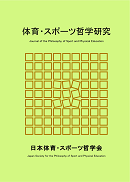Volume 41, Issue 1
Displaying 1-8 of 8 articles from this issue
- |<
- <
- 1
- >
- >|
Obituary
-
2019 Volume 41 Issue 1 Pages 1-3
Published: 2019
Released on J-STAGE: September 20, 2019
Download PDF (662K)
Original Articles
-
2019 Volume 41 Issue 1 Pages 5-15
Published: 2019
Released on J-STAGE: September 20, 2019
Download PDF (851K) -
2019 Volume 41 Issue 1 Pages 17-32
Published: 2019
Released on J-STAGE: September 20, 2019
Download PDF (950K)
Materials
-
2019 Volume 41 Issue 1 Pages 33-46
Published: 2019
Released on J-STAGE: September 20, 2019
Download PDF (958K) -
2019 Volume 41 Issue 1 Pages 47-54
Published: 2019
Released on J-STAGE: September 20, 2019
Download PDF (791K)
Reports
-
2019 Volume 41 Issue 1 Pages 55-57
Published: 2019
Released on J-STAGE: September 20, 2019
Download PDF (906K) -
2019 Volume 41 Issue 1 Pages 59-63
Published: 2019
Released on J-STAGE: September 20, 2019
Download PDF (1028K) -
2019 Volume 41 Issue 1 Pages 65-79
Published: 2019
Released on J-STAGE: September 20, 2019
Download PDF (1437K)
- |<
- <
- 1
- >
- >|
